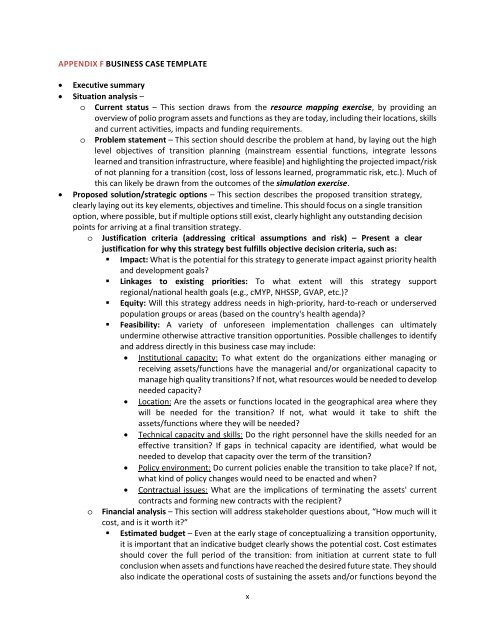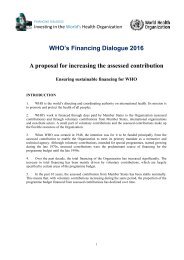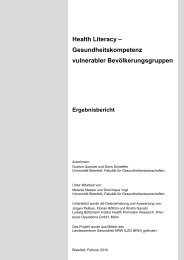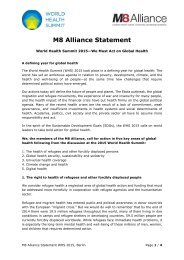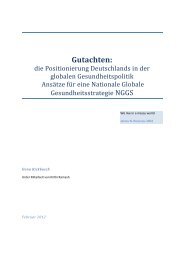POLIO PLANNING
TransitionGuidelinesForPolioLegacy
TransitionGuidelinesForPolioLegacy
Create successful ePaper yourself
Turn your PDF publications into a flip-book with our unique Google optimized e-Paper software.
APPENDIX F BUSINESS CASE TEMPLATE<br />
• Executive summary<br />
• Situation analysis –<br />
o Current status – This section draws from the resource mapping exercise, by providing an<br />
overview of polio program assets and functions as they are today, including their locations, skills<br />
and current activities, impacts and funding requirements.<br />
o Problem statement – This section should describe the problem at hand, by laying out the high<br />
level objectives of transition planning (mainstream essential functions, integrate lessons<br />
learned and transition infrastructure, where feasible) and highlighting the projected impact/risk<br />
of not planning for a transition (cost, loss of lessons learned, programmatic risk, etc.). Much of<br />
this can likely be drawn from the outcomes of the simulation exercise.<br />
• Proposed solution/strategic options – This section describes the proposed transition strategy,<br />
clearly laying out its key elements, objectives and timeline. This should focus on a single transition<br />
option, where possible, but if multiple options still exist, clearly highlight any outstanding decision<br />
points for arriving at a final transition strategy.<br />
o Justification criteria (addressing critical assumptions and risk) – Present a clear<br />
justification for why this strategy best fulfills objective decision criteria, such as:<br />
• Impact: What is the potential for this strategy to generate impact against priority health<br />
and development goals?<br />
• Linkages to existing priorities: To what extent will this strategy support<br />
regional/national health goals (e.g., cMYP, NHSSP, GVAP, etc.)?<br />
• Equity: Will this strategy address needs in high-priority, hard-to-reach or underserved<br />
population groups or areas (based on the country's health agenda)?<br />
• Feasibility: A variety of unforeseen implementation challenges can ultimately<br />
undermine otherwise attractive transition opportunities. Possible challenges to identify<br />
and address directly in this business case may include:<br />
• Institutional capacity: To what extent do the organizations either managing or<br />
receiving assets/functions have the managerial and/or organizational capacity to<br />
manage high quality transitions? If not, what resources would be needed to develop<br />
needed capacity?<br />
• Location: Are the assets or functions located in the geographical area where they<br />
will be needed for the transition? If not, what would it take to shift the<br />
assets/functions where they will be needed?<br />
• Technical capacity and skills: Do the right personnel have the skills needed for an<br />
effective transition? If gaps in technical capacity are identified, what would be<br />
needed to develop that capacity over the term of the transition?<br />
• Policy environment: Do current policies enable the transition to take place? If not,<br />
what kind of policy changes would need to be enacted and when?<br />
• Contractual issues: What are the implications of terminating the assets' current<br />
contracts and forming new contracts with the recipient?<br />
o Financial analysis – This section will address stakeholder questions about, “How much will it<br />
cost, and is it worth it?”<br />
• Estimated budget – Even at the early stage of conceptualizing a transition opportunity,<br />
it is important that an indicative budget clearly shows the potential cost. Cost estimates<br />
should cover the full period of the transition: from initiation at current state to full<br />
conclusion when assets and functions have reached the desired future state. They should<br />
also indicate the operational costs of sustaining the assets and/or functions beyond the<br />
x


